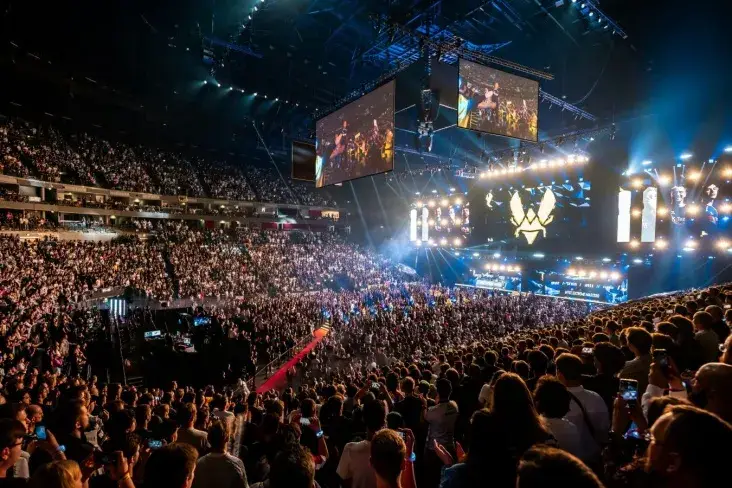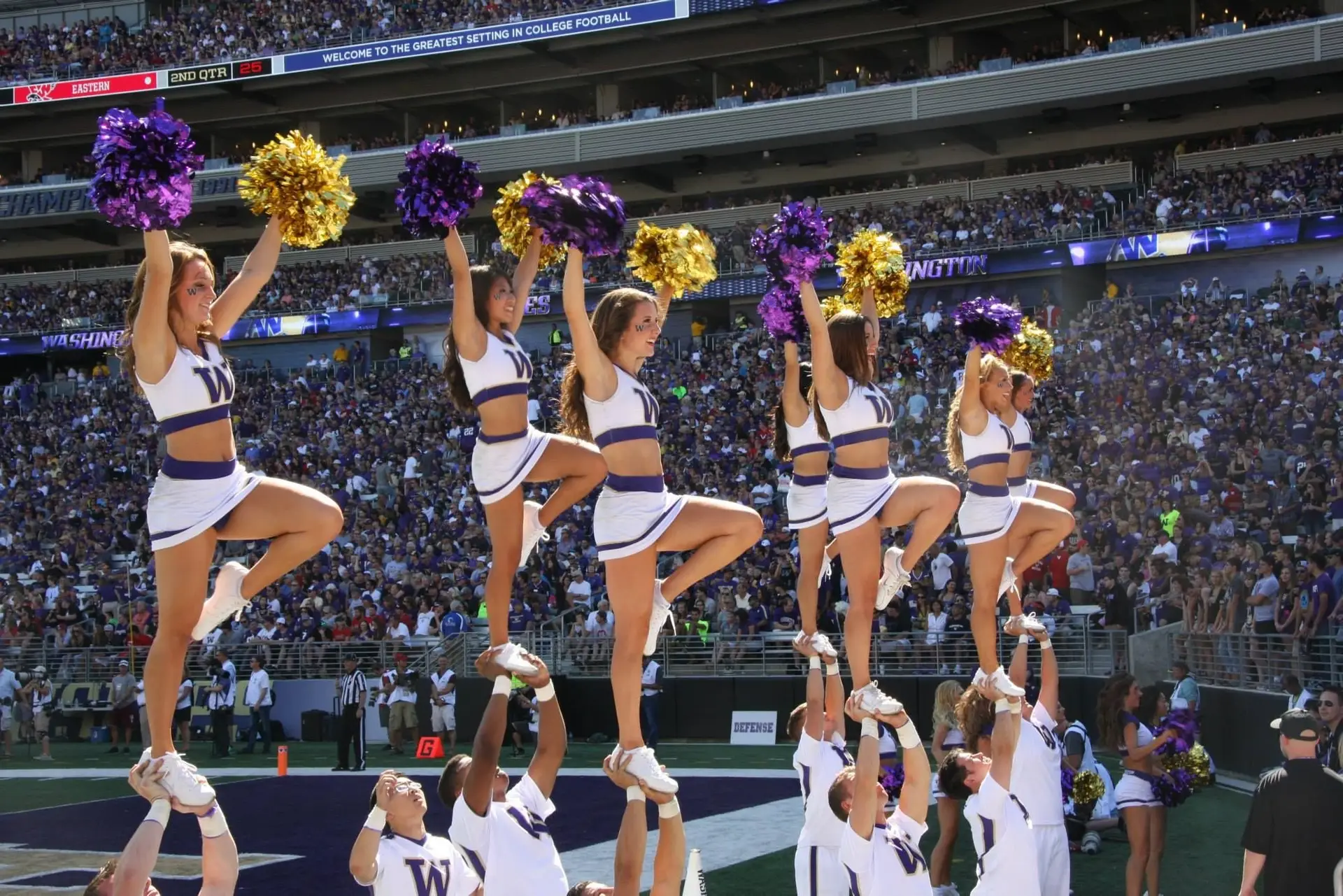CS competitions have become an integral part of the cybersports world, uniting players, teams and fans across the planet. Competitions create a unique atmosphere of excitement, competition and a shared desire to succeed. CS:GO tournaments are a cultural phenomenon that unites generations and inspires them to reach new heights.
What are CS tournaments and why are they so popular?
CS:GO tournaments are real cybersport festivals where players from all over the world gather to demonstrate their skills, delight spectators and fight for impressive prize money. The large-scale events unite millions of fans and professional gamers who are inspired by the excitement of victories and the greatness of strategies.

The first major tournament took place in 2013, when the project gained popularity after an update that improved graphics and game mechanics. Since the beginning, the tournament scene has grown from localised events to large-scale events attracting millions of spectators. Every year the competitions are gaining more and more audience, prize pools are increasing, and ESL and DreamHack organisations are doing their best to raise the quality of the events to the highest level.
The popularity of the competitions is explained by the fact that spectators see in them not only a game, but also a real battle of wits. The important things here are: marksmanship and quick reaction, tactical thinking, team cohesion, the ability to adapt to changing conditions and anticipate the actions of opponents. Professional teams attract attention no less than football clubs or basketball stars – they are cheered for, admired, their victories become significant events.
The biggest CS:GO tournaments: what makes the world go crazy?
When it comes to the biggest CS:GO tournaments, we can’t forget ESL, Major, and BLAST Premier. The events capture the imagination of fans, because they are real shows of passion and high level of competitive spirit.
ESL and BLAST Premier: the top events of the year
ESL and BLAST Premier are some of the most important tournaments on the CS:GO calendar. ESL organises tournaments ranging from local championships to global finals where the best of the best face off. BLAST Premier, in turn, is known for its spectacular format and creative approach to the organisation of meetings, which makes it unique in the eyes of fans. The events attract hundreds of thousands of spectators every year, and the total prize pool can reach millions of dollars.
Major: the tournament that defines legends
Major is a key event that has a special meaning for every professional player. Major champion status is not just a title, but a symbol of skill and success. The CS:GO tournament involves teams that have gone through tough qualifiers, and victory is the beginning of the road to legendary status. Team Astralis became Major champions four times, demonstrating unique strategies and unrivalled teamwork.
Prize pools: why is it important?
The prize pools of major CS:GO tournaments range from several hundred thousand to several million dollars. For example, the amount of the fund of one of the last Majors was more than a million dollars, and every team that makes it to the top 10 receives solid cash rewards. The budgets serve not only as motivation for participants, but also attract sponsors who invest in the development of cyber sports teams and infrastructure, ensuring the long-term future of the industry.
Useful resources for CS:GO tournament tracking and training
 If you want to become a real expert in CS or just follow the hottest news, you should definitely know about the following resources:
If you want to become a real expert in CS or just follow the hottest news, you should definitely know about the following resources:
- HLTV.org – the most famous portal for tracking all CS match statistics. Here you can find information about team lineups, results of recent tournaments, schedules of future matches and even predictions. HLTV is also famous for its exclusive interviews with the best players and analysts.
- Liquipedia.net is a kind of CS encyclopaedia. Here you will find all possible information: from player biographies and team histories to detailed descriptions of tournaments and statistics. Liquipedia is often used as the main source of information about team squads and their changes.
- Twitch.tv is a platform for watching live broadcasts. The best teams and players regularly stream, and here you can not only watch tournaments in real time, but also learn new strategies and approaches to the game by watching professionals battle it out at tournaments.
- YouTube channels from organisations such as ESL and BLAST Premier are a treasure trove of match footage, analysis and reviews. Many channels offer strategy breakdowns from professional players to help you better understand the inner workings of eSports.
- Faceit and ESEA are platforms where participants can compete and improve their skills.
These resources will help you stay up to date, learn from the best and maybe one day become part of the big world of CS:GO tournaments. Using them, you can not only enjoy the game, but also deepen your knowledge, develop your skills and constantly improve.
CS Leagues and Cups: A Beginner’s Guide
Leagues are regular competitions where teams fight for a chance to get a place in major competitions. The main difference with cups is the structure. Leagues are held over several months and allow teams to accumulate points to advance in the tournament grid. At the same time, CS Cups are one-off events, often with a solid prize pool, where every match is important, as any defeat can knock a team out of the competition.
ESL Pro League is one of the most prestigious leagues, which lasts for several months. It brings together the best teams from all over the world. Cup tournaments, such as IEM Katowice, attract attention not only because of the scale of the prizes, but also because of the short but intense gameplay, which is especially interesting for spectators due to the high intensity of the matches.
The best teams and players: CS legends
The true legends that millions look up to. Natus Vincere (Na’Vi) is one of the most popular and successful teams in history, having won numerous CS:GO tournaments including Major and BLAST Premier. The founder, the legendary s1mple, is considered one of the best snipers in the world, and his reactions and strategy are amazing for fans and opponents alike.
Astralis is certainly one of the most successful in CS history. Their special approach to training, attention to detail and teamwork allowed them to win a record four Major titles. Astralis’ success is based on the unique strategies they developed by analysing every map and every action of their opponents, which allowed them to create impenetrable defences and effective attacks.
Maps and strategies: how to win a CS:GO tournament?
Maps like Dust2, Mirage, and Inferno play a key role in the competition. Each has its own unique characteristics, and teams develop special strategies to gain an advantage over their opponents. Dust2 is known for its long shot lines, making it ideal for snipers, while Mirage requires deliberate team coordination to capture points.

Strategies in CS:GO tournaments also play an important role. A quick rush can work on short-range maps like Inferno, while methodically holding positions requires a high level of coordination and understanding between competitors. Teams spend months developing tactics and studying their opponents to exploit their weaknesses at key moments in a match.
Conclusion
 CS:GO tournaments are not just a competition, they are a cultural event that brings people together all over the world. It’s not just about the game, but also about the emotions it evokes and the opportunities available to players, teams and fans. CS tournament schedules are becoming a significant part of the lives of fans who plan their days so that they don’t miss important matches.
CS:GO tournaments are not just a competition, they are a cultural event that brings people together all over the world. It’s not just about the game, but also about the emotions it evokes and the opportunities available to players, teams and fans. CS tournament schedules are becoming a significant part of the lives of fans who plan their days so that they don’t miss important matches.
 en
en  ru
ru  de
de  ar
ar  es
es  nl
nl  hi
hi  fr
fr  it
it  pt
pt  el
el 











